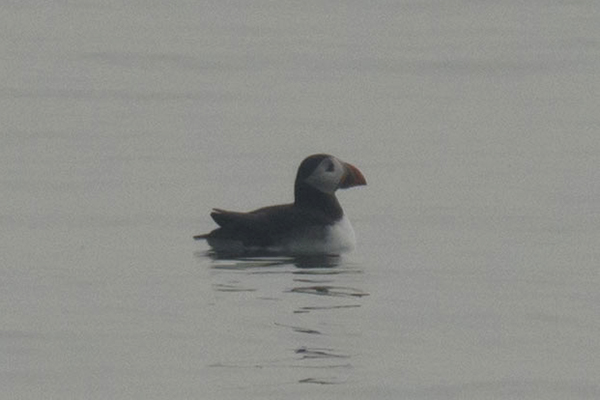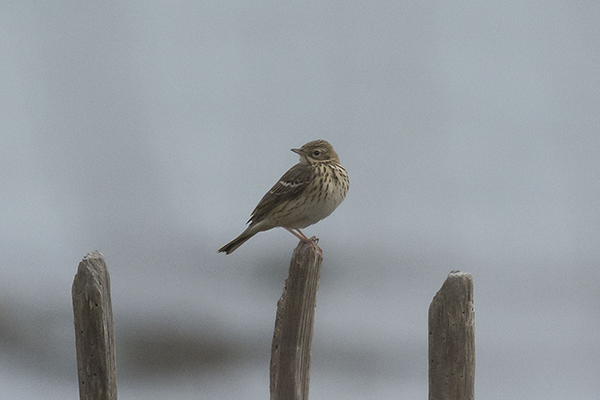Although I've got an interest in all forms of natural history I'm ashamed to say my insect identification isn't that good. I'm very much still learning but really enjoy finding species I've never come across before (or not paid any attention to). I've seen Tawny Mining bees at a number of location so was really pleased to find what I thought was the nest burrow of one in our garden. It took a 3 hour stakeout to finally nail it! Here she is emerging from her nest chamber.
I'd also noted a number of wasp mimics in the front garden seemingly hovering aimlessly around some rocks beneath a shrub in an old rockery in the front garden. I managed a phone shot and sent it to a very knowledgeable friend (cheers Gavin) for a possible identification.
As hoped he came back with an answer - one I wasn't expecting! They were actually cuckoo bees of the genus nomad. Cuckoo Bee's, as their avian namesake suggests, lay their eggs in the nests of other solitary bees. That suggested there must be other bees somewhere and sure enough a close examination lying on my belly revealed what looks like the nest chambers of Red Mason Bee's beneath the rocks with the entrances 'cemented' up. You can just see the entrances below the rock in the photo below:
Using the macro lens I managed some pretty decent photos and using the recently acquired excellent 'Field Guide to the Bees of Great Britain & Ireland' (and with a hint from Rob Sandham) I think they may be Goodens Nomad Bee (Nomada goodeniana).
However, I think the one below maybe a Little Nomad Bee (Nomada flavoguttata)
I'm finding the whole subject of solitary bees fascinating!
29 Apr 2019
22 Apr 2019
Huffin & Puffin on Hilbre, no G
We've had an excellent few weeks on Hilbre and spring migration has started in earnest. This year I've been able to get over more often and have been present on some really excellent days!
Highlights over the last few weeks have included my first ever Hilbre and Wirral / Cheshire Puffin that appeared off the NE side on a misty morning. Although distant the sea was flat calm so the viewing was quite good. It was on show for about 15 minutes before flying northwards into the mist.
The same day fin ished with the discovery of a colour ringed Oystercatcher as the tide fell and the birds left their roost on Middle Eye. Some detective work and help from Richard Du Feu put me in contact with a Norwegian ringing scheme and the results came back within minutes! Another good 'control' for Hilbre.
Short-eared Owls are on the move and the Chairman and I arrived one evening for an over night stay to find Paul Slater had found an owl that had been showing exceptionally well just outside the Obs before we arrived. A quick search of the island as dusk fell revealed it at the north end of the island.
A fabulous bird and a fabulous sunset.
A week later another Shortie was disturbed in bracken at the north end of Hilbre and flew towards Red Rocks being pursued by angry Herring Gulls.
Over the last week or so good numbers of pipits and flava wagtails have been passing over the island but the misty Puffin day also resulted in a few being grounded and spending the morning buzzing round the various paddocks and gardens - including these two that turned up in the Obs garden!
Another recent visit coincided with a fall of migrants and 82 birds were ringed. Mainly Willow Warblers but there were good numbers of Blackcaps and Chiffchaffs as well. The day coincided with Hilbre's first Ring Ouzel of the spring. As is common with these birds on Hilbre it hung around for most of the day and was eventually caught in one of the heligoland traps. This particular bird was really scaly underneath and caused some discussion over its potential origin.
The Ring Ouzel wasn't the only highlight of the day. Two Grasshopper Warblers, a fine male Redstart and a Hilbre scarcity in the form of a Sedge Warbler was also ringed.
If the spring carries on like this I'll have to consider making Hilbre my local patch for Patchwork Challenge 2020 rather than the area around my usual one! At the moment I'm on 80 species for Hilbre and 80 for my local patch / garden!
Highlights over the last few weeks have included my first ever Hilbre and Wirral / Cheshire Puffin that appeared off the NE side on a misty morning. Although distant the sea was flat calm so the viewing was quite good. It was on show for about 15 minutes before flying northwards into the mist.
The same day fin ished with the discovery of a colour ringed Oystercatcher as the tide fell and the birds left their roost on Middle Eye. Some detective work and help from Richard Du Feu put me in contact with a Norwegian ringing scheme and the results came back within minutes! Another good 'control' for Hilbre.
Oystercatchers colour ringing in Norway (3)
Last CR-Code Green ring with white Code: T231 LBM;RBGW(T231)
Ringing Centre Stavanger Museum (Norway) Ring number 5195589
Species Eurasian Oystercatcher Haematopus ostralegus

Last CR-Code Green ring with white Code: T231 LBM;RBGW(T231)
Ringing Centre Stavanger Museum (Norway) Ring number 5195589
Species Eurasian Oystercatcher Haematopus ostralegus
Date
Place
Coordinates
Days
Distance
Direction
19.07 2017



Lynghøyen, Mjåtveit, Meland, Hordaland, Norway
60°30'57"N 005°13'41"E
-----
-----
---
06.08 2017


Lynghøyen, Mjåtveit, Meland, Hordaland, Norway
60°30'57"N 005°13'41"E
18
0
16.04 2019

Hilbre Island, Cheshire, Great Britain
53°38'22"N 003°22'54"E
636
773
A fabulous bird and a fabulous sunset.
A week later another Shortie was disturbed in bracken at the north end of Hilbre and flew towards Red Rocks being pursued by angry Herring Gulls.
Another recent visit coincided with a fall of migrants and 82 birds were ringed. Mainly Willow Warblers but there were good numbers of Blackcaps and Chiffchaffs as well. The day coincided with Hilbre's first Ring Ouzel of the spring. As is common with these birds on Hilbre it hung around for most of the day and was eventually caught in one of the heligoland traps. This particular bird was really scaly underneath and caused some discussion over its potential origin.
The Ring Ouzel wasn't the only highlight of the day. Two Grasshopper Warblers, a fine male Redstart and a Hilbre scarcity in the form of a Sedge Warbler was also ringed.
If the spring carries on like this I'll have to consider making Hilbre my local patch for Patchwork Challenge 2020 rather than the area around my usual one! At the moment I'm on 80 species for Hilbre and 80 for my local patch / garden!
16 Apr 2019
Migrants on Hilbre
Now I've got a bit more time on my hands its been nice to be able to visit Hilbre more often. As always there is plenty of maintenance work to do to the observatory building, heligoland traps and various gates and fences after the winter period. The running and maintenance of the observatory relies upon a small group of dedicated volunteers - whether its ringing, recording or maintenance the work involved in running an accredited observatory is never ending!
Spring migration is now well underway and an early morning trip last week with the Chairman resulted in a few birds being caught and ringed in the newly repaired heligoland traps (well, they're nearly finished!). My first Wheatears of the year passed through pausing only for a quick photo at the south end.
The first Willow Warbler of the spring was trapped and ringed along with a couple of Chiffchaff which made for a nice comparison between these two species.
Chiffchaff above, Willow Warbler below
We've already had a controlled Chiffchaff this year and it'll be interesting to see haw many other controls we get this year.
Spring migration is now well underway and an early morning trip last week with the Chairman resulted in a few birds being caught and ringed in the newly repaired heligoland traps (well, they're nearly finished!). My first Wheatears of the year passed through pausing only for a quick photo at the south end.
The first Willow Warbler of the spring was trapped and ringed along with a couple of Chiffchaff which made for a nice comparison between these two species.
Chiffchaff above, Willow Warbler below
We've already had a controlled Chiffchaff this year and it'll be interesting to see haw many other controls we get this year.
Subscribe to:
Posts
(
Atom
)




























































































